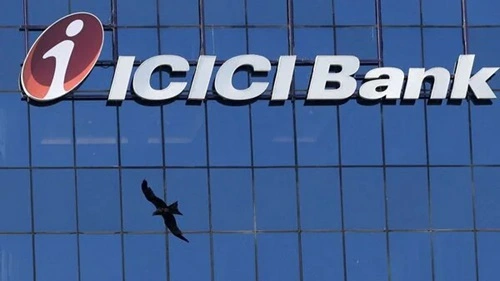ICICI Bank is set to disclose Q1 FY26 results on July 19, 2025, with analysts forecasting a 6–10% YoY rise in standalone net profit to ₹11,800–12,100 crore, NII growth of ~8–10% to ₹21,000–21,200 crore, and a marginal compression in NIM to 4.2% from 4.4% due to cooling interest rates and stable deposit costs. This performance context is pivotal for evaluating ICICI’s current positioning through a SWOT framework.

Strengths
1. Market Leadership & Diversified Network: ICICI serves as the second-largest private lender in India, with over 6,600 branches and 16,000 ATMs across 11 countries. Its leadership in diversified retail, SME, and corporate banking segments strengthens market reach and resilience .
2. Digital-First Innovation & Efficiency: A pioneer in digital banking, ICICI’s platforms (iMobile, InstaBIZ) handle over 80% of total transactions digitally (~13.4m mobile users). This confers operating efficiency, cost control, and competitive advantage.
3. Robust Financial Performance: Q4 FY25 net profit rose 18% YoY to ₹12,630 crore; NII increased 11% YoY to ₹21,193 crore. Anticipated strong loan growth (~13% YoY) positions it ahead of industry averages.
4. Well-Managed Asset Quality & Provisioning: Provisions for Q1 are projected at ₹5,100 crore with credit costs stable (slippages ~2%), demonstrating strong underwriting and proactive credit management amid uncertainty.
5. Diversified Fee and Non-Interest Revenue: ICICI’s non-interest income—comprising treasury, bancassurance (via ICICI Lombard and Prudential), asset management, and securities—offers revenue resilience and cross-sell potential.
Weaknesses
1. Compression on Net Interest Margin: Sequential margin dip is likely due to slower repricing of deposits versus loan yields, with NIM expected to decline 20 bps QoQ to ~4.0–4.2%.
2. High Cost-to-Income Ratio: With C/I ratio around 47%, higher than peers, ICICI shows potential for efficiency gains through cost optimization.
3. Residual Governance Overhang: Though remediated, past governance controversies (e.g., Videocon case) still linger in stakeholder memory and warrant continued transparency efforts.
4. Limited Global Revenue Diversification: With overseas operations contributing <5% of revenue, ICICI remains heavily reliant on the Indian market and domestic cycle.
Opportunities
1. Credit Growth Momentum: With healthy industry demand and ICICI outperforming with ~13% YoY loan growth, its momentum is likely to last, supported by lending advantages and digital distribution.
2. Digital Ecosystem Leveraging: Expansion of APIs, instant loan offers, YONO-style services, and fintech partnerships can broaden customer reach and monetization via embedded finance .
3. Fee Income Upside in Wealth & Insurance: Growth in cross-sell through ICICI Lombard (Q1 PAT up 29% to ₹747 crore) and ICICI Prulife (Q1 PAT +34% to ₹302 crore) presents strong non-interest income prospects.
4. Expansion into Rural & SME Segments: Deeper penetration in tier‑3/4 markets and digital SME lending reduces concentration risk and aligns with inclusion mandate.
5. Green Finance & ESG Growth: Leveraging green bonds, climate finance, and sustainable lending taps into expanding ESG-aligned investment flows .
Threats
1. Margins Under Pressure from Rate Cuts: Ongoing RBI rate cuts may further squeeze margins as deposit rates lag loan yield reductions.
2. Intense Competition: Rivalry from HDFC, Axis, Kotak, plus aggressive NBFCs and fintech disruptors, adds pricing and product pressure.
3. Asset Quality Risk amid Economic Slowdown: Credit quality could deteriorate if macro stress intensifies—especially in retail or unsecured segments.
4. Cybersecurity & Technology Risks: Increased digital adoption warrants robust cybersecurity investment—data breaches or outages could erode trust.
5. Regulatory & Compliance Changes: As a D-SIB, ICICI faces tighter norms (capital buffers, PCA, consumer protection)—non-compliance could invite sanctions and increase costs.
Future Outlook
Profit & NII Growth: With Q1 H1 profit expected to grow 6–10% and NII up ~8–10%, ICICI is likely to deliver steady earnings momentum into H2 FY26.
Margin Stabilization: Though margins may soften initially, prudent liability repricing and fee-income growth may stabilize NIMs near ~4.2% by year-end.
Loan Growth to Trend Above Industry: Outpacing peers with ~13% YoY credit expansion, ICICI is poised to sustain higher growth given digital strength and corporate franchise.
Rising Contribution from Non-Interest Income: Stronger revenues from insurance, wealth, and transaction banking will lift non-NII share and reduce margin dependency.
Efficiency & Cost Optimization: Reducing cost-to-income, optimizing branch/ATM footprint, and enhancing digital self-service can drive ROAs and ROEs higher.
Rural & ESG Focus: Deepening rural penetration and ESG-linked financing will support sustainable and diversified growth.
ICICI Bank remains a high-performing private lender with solid fundamentals—robust balance sheet, digital edge, diversified revenue, and asset quality. The near-term challenge lies in margin management and cost efficiency, while long-term success depends on sustaining credit growth, enhancing fee-driven businesses, and leveraging digital strength. The next 12–18 months will reveal whether ICICI can convert its leadership into enhanced value and durable returns in evolving banking dynamics.